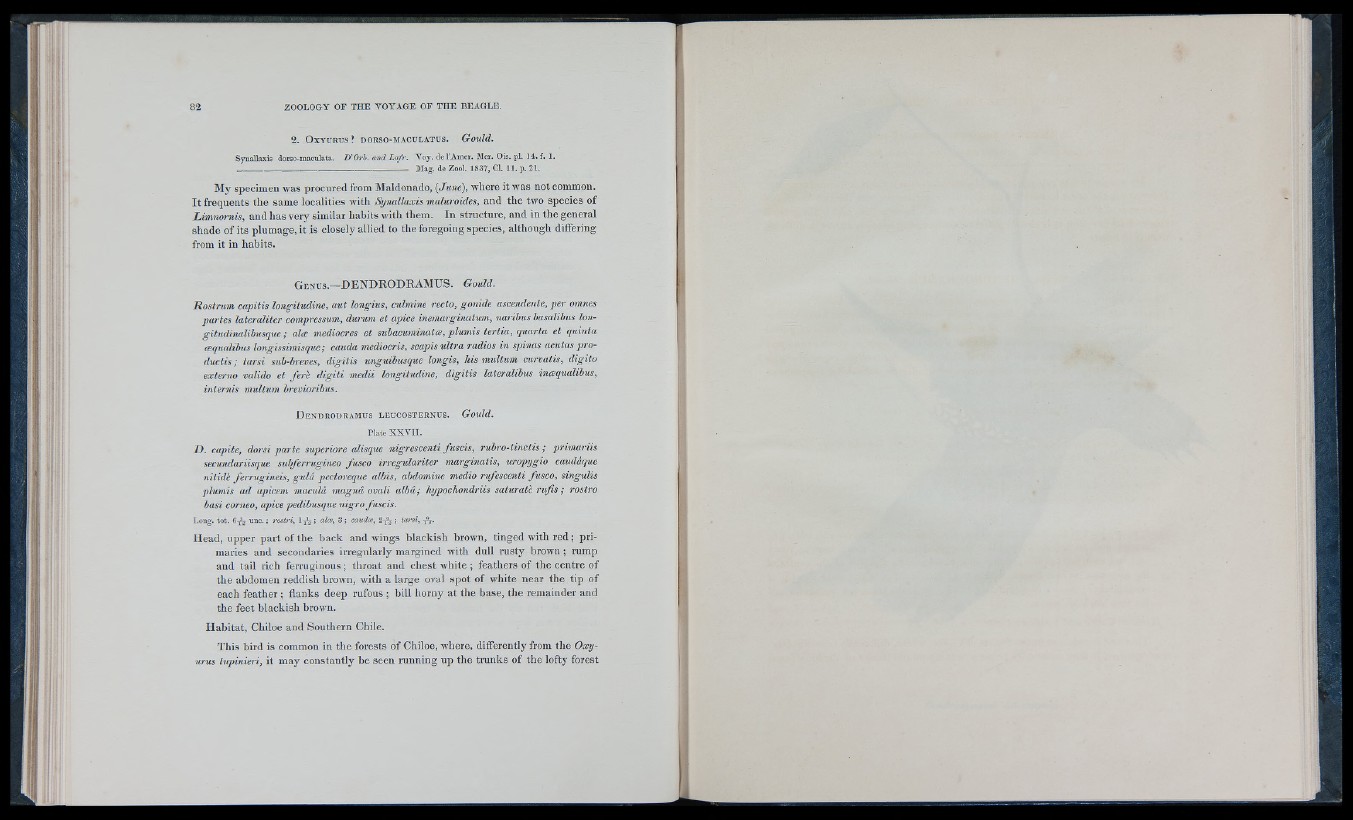
ZOOLOGY OF THE VOYAGE OF TH E BEAGLE.
2 . O x y u r u s ? d o r s o - m a c u l a t u s . Gould.
Synallaxis dorso-maculata. D’Orh. and L a fr. Yoy. de I’Amer. Mer. Ois. pi. 14. f. I.
Mag. de Zool. 1837,01. 11. p. 21.
My specimen was procured from Maldonado, (Jiine), where it was not common.
It frequents the same localities with Synallaxis maluroides, and the two species of
Limnornis, and has very similar habits with them. In structure, and in the general
shade of its plumage, it is closely allied to the foregoing species, although differing
from it in habits.
G e n u s .—DENDRODRAMUS. Gould.
Rostrum capitis longitudine, aut longius, culmine recto, gonide ascendente, per omnes
partes lateraliter compressum, durum et apice inemarginatum, naribus basalibus lon-
gitudinalibusque ; aloe mediocres et subacuminata, plumis tertia, quarta et quinta
cequalibus longissimisque; cauda mediocris, scapis ultra radios in spinas acutas productis
; tarsi sub-breves, digitis unguibusque longis, his multum curvatis, digito
externo valido et ferè digiti medii longitudine, digitis lateralibus inaqualibus,
internis muUum brevioribus.
D e n d r o d r a m u s l e u c o s t e r n u s . Gould.
Piate X X V II.
D . capite, dorsi parte superiore alisque nigrescenti fuscis, rubro-tinctis ; primariis
secundariisque suhferrugineo fusco irregulariter marginatis, uropygio caudâque
nitidè ferrugineis, gulâ pectorecque albis, abdomine medio rufescenti fusco, singulis
plumis ad apicem maculà magna ovali albâ; hypochondriis saturatè rufis ; i-ostro
basi corneo, apice pedibusque nigro fuscis.
Long. tot. 6 -^ unc. ; rostri, ; aloe, 3 ; caudæ, 2 -^ ; tarsi,
Head, upper part of the back and wings blackish brown, tinged with red ; primaries
and secondaries irregularly margined with dull rusty brown ; rump
and tail rich ferruginous ; throat and chest white ; feathers of the centre of
the abdomen reddish brown, with a large oval spot of white near the tip of
each feather ; flanks deep rufous ; bill horny at the base, the remainder and
the feet blackish brown.
Habitat, Chiloe and Southern Chile.
This bird is common in the forests of Chiloe, where, differently from the Oxy-
ui-us tupinieri, it may constantly be seen running up the trunks of the lofty forest